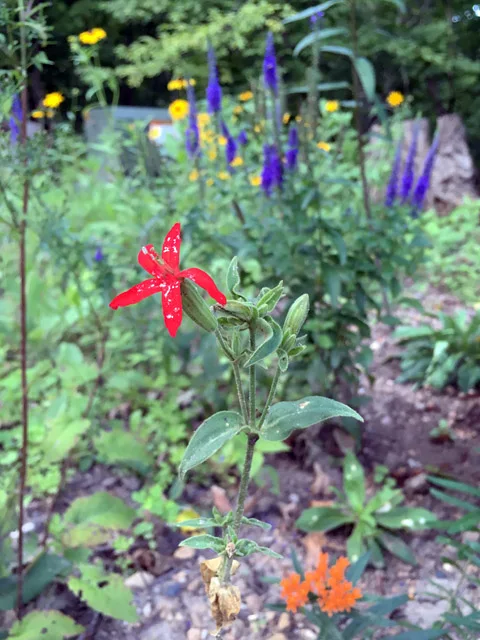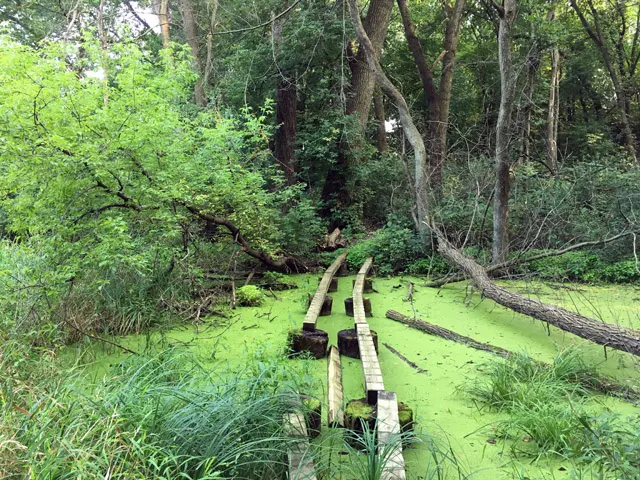For the first time in probably two months I headed to the western side of our woods. The light has been hazy, the mosquitoes just this side of intolerable. Now that the water has killed off all of the trees, it's time to hack back the weeds and garden this part of the woods.
I spend my time looking at plant parts with purpose to divine the weed from the wanted. A seed is one clue and my digital camera a prosthesis of magnification and memory.
Could the seed, above, and node, hairs aimed down, point to
Leersia virginica. White Grass? It's hard to be absolute without an expert on hand.
I composed a little poem about grass anatomy.
Lemma, awn, sheath
and palea.
Ligule, node, culm
and glume.
The bridge I tore apart in late winter still in shambles. I did create a working drawing for its replacement and designed a steel post and wooden beam structure, prototype section yet to be built. These places belong to mosquitoes in summer, and with so much else to do, the bridge project has languished.
From the head of the bridge, looking east, southeast. Reed canary grasses, willow, cottonwood, cattail, some sedge. Behind me a forest of invasive buckthorn that has accelerated since the 2012, thunderstorm downing of a giant old bur oak.
The prototype for this bridge will be built as a pier into the wetland in the photo at the beginning of this post. Why there? The heavy rains of the last few years has created constant water that has killed off every tree near and within the bounds of the forest slough. Without the basswood, ash and maple that tolerated seasonal wetness only, there is quite a bit of sun hitting the water and land. Invasive species are gaining ground and water, or have already taken it. Garlic mustard, reed canary grass, Canadian thistle (not from Canada, originally) are the powerhouses, here. Late growing natives, like clearweed,
Pilea pumila, fill in after the garlic mustard dies back. An aster, here and there, and some hogpeanut too. The soil washes down a severe slope just to the north of the water. By September there are few leaves left by earthworms and decomposition to help slow the heavy rains. The soil pathway created by this down rush of water grows little. This bare patch will be the entrance to the water edge.
I know this spot well. It is a mass of garlic mustard in spring and early summer, yet a few plants, like clearweed, hold on or can work with the seasonality of the invasive species. I've recently seen what is likely to be white grass,
Leersia virginica, and what I believe is marsh skullcap,
Scutellaria galericulata. In spring I tray-seeded sweet joe pye weed which tolerates some shade and wet for part of this area. I have some fringed brome, iris versicolor, cardinal flower, blue vervain (tolerates wet soils), ironweed, and a couple of others I cannot recall from my desk. We also have enough blue lobelia, physostegia (obedient plant), and even some chelone glabra (turtlehead) volunteering around the gardens to shift to the back. Near the small pier I will clear for these transplants and, come mid fall, will be on the look out for pull out of garlic mustard first year rosettes.
*An artist friend told me that duckweed covered waters like ours were called pickling ponds by locals and young kids were warned to stay away from them, lest they be pickled.

















